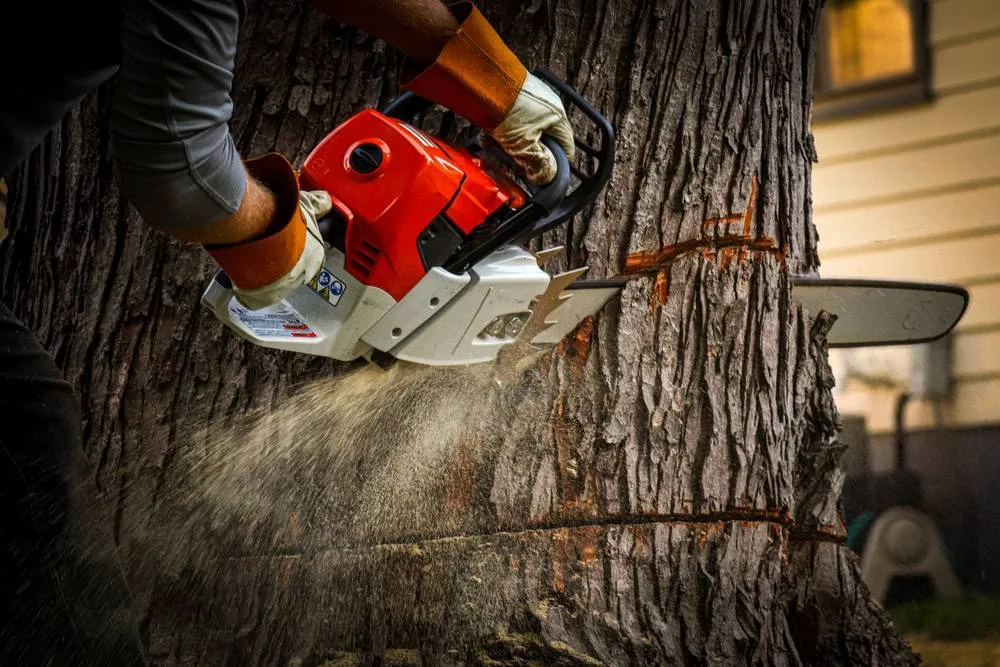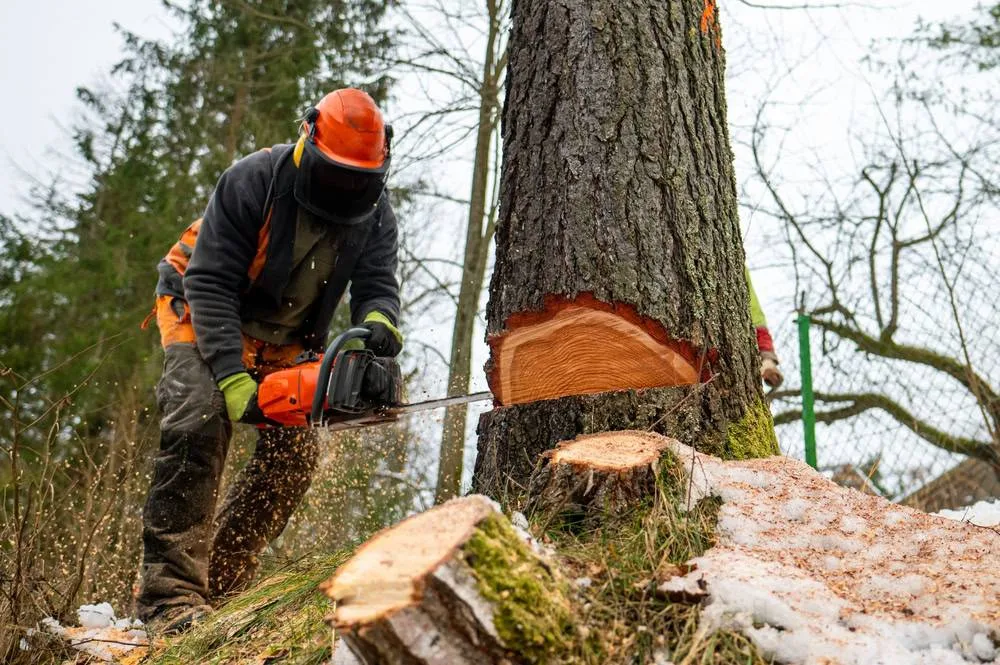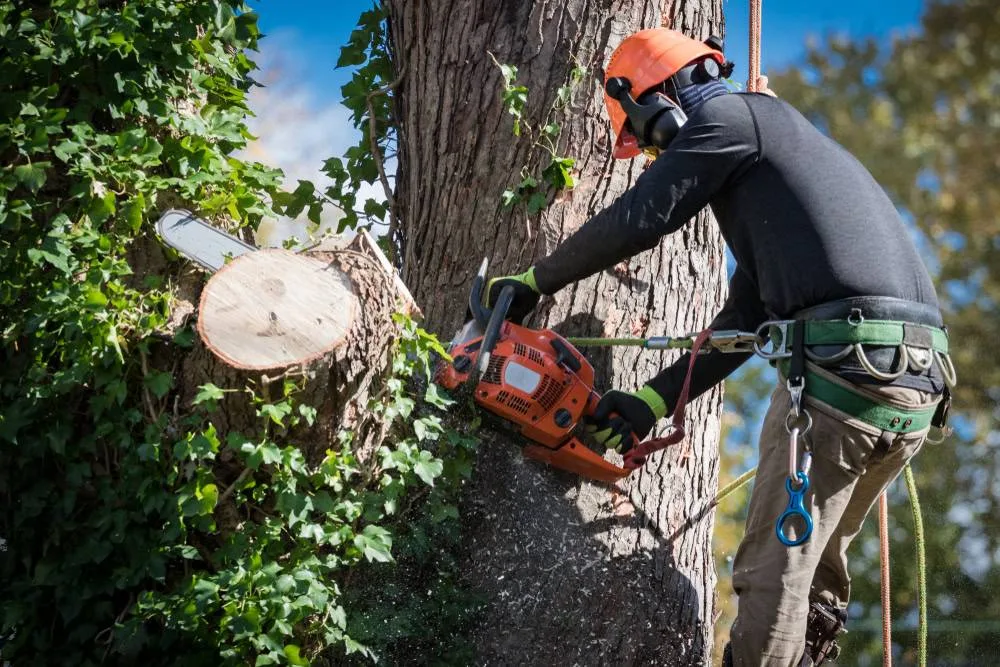Tree Services in Port Jefferson
Your Trees Handled Right the First Time

Hear from Our Customers

Professional Tree Care Port Jefferson
Your property stays protected throughout the entire process. Trees get removed safely without damaging your landscaping, house, or driveway. Cleanup happens completely before we leave – all debris hauled away, area raked clean, and your yard looking better than when we started.
You don’t deal with weeks of wondering when someone will come back to finish the job. Emergency situations get handled immediately, not when it’s convenient for us. Professional equipment means the work gets done efficiently without tearing up your property or creating bigger problems.
Tree Service Company Port Jefferson
Green Light Tree Services has been handling tree care in Port Jefferson and throughout Suffolk County for over 17 years. We’re the team local homeowners call when they need tree work done completely and professionally.
Our certified arborists understand the native Long Island tree species and the unique challenges our coastal weather brings – from nor’easters to summer storms that can turn healthy trees into hazards overnight. We’re licensed, insured, and equipped to handle everything from routine maintenance to emergency storm cleanup in Port Jefferson’s tight suburban neighborhoods.

Tree Removal Process Port Jefferson
First, we assess your tree and property situation with a certified arborist who explains exactly what needs to happen and why. You get a clear, written estimate with no hidden fees – tree removal, stump grinding, cleanup, and debris hauling all included upfront.
When we arrive for the work, we protect your property first with tarps and barriers to keep your landscaping and structures intact. Then we handle the tree work using proper equipment and techniques – cranes for large trees, specialized rigging for tight spaces, professional-grade safety gear throughout.
Complete cleanup happens before we leave. All branches, logs, and debris get hauled away in our trucks. The work area gets raked clean, and we remove all wood chips and sawdust. You’re left with exactly what you wanted – problem solved, property protected, no mess to deal with.

Ready to get started?
Tree Services Available Port Jefferson
Tree removal in Port Jefferson gets handled safely whether you’re dealing with storm damage, dead trees, or clearing space for construction. We have equipment to handle large trees in tight spaces without damaging your property or neighboring homes.
Tree trimming and pruning keeps your trees healthy while protecting your home from overhanging branches. Timing matters – cut at the wrong season and you can stress or kill a tree. Our certified arborists know when and how to prune different species common to Port Jefferson.
Emergency tree service means someone answers the phone when storms hit. Fallen trees blocking driveways or threatening structures get priority response because you can’t wait until Monday morning. Stump grinding removes those trip hazards and eyesores completely, turning stumps into mulch you can use or we’ll haul away.

How much does tree removal cost in Port Jefferson NY?
Tree removal costs in Port Jefferson depend on the tree’s size, location, and complexity of the job. Small trees under 30 feet typically cost $300-800, while larger trees can range from $1,000-3,000 or more depending on factors like proximity to power lines, houses, or tight spaces.
Trees near structures cost more because they require specialized equipment and extra care to avoid property damage. We provide free written estimates that break down all costs upfront – removal, cleanup, stump grinding, and debris hauling included. Most Port Jefferson homeowners find professional removal more affordable than expected, especially considering the cost of property damage if something goes wrong with DIY attempts.
Do you provide emergency tree service in Port Jefferson?
Yes, Green Light Tree Services provides 24/7 emergency response for storm damage throughout Port Jefferson. When trees fall on houses, block driveways, or create safety hazards, you need immediate help from professionals with proper equipment.
Our emergency crew responds quickly to clear dangerous situations and restore access to your property. Priority goes to safety hazards first, then access issues like blocked driveways. Emergency work gets the same complete cleanup as scheduled jobs, and you receive documentation for insurance claims if needed. We don’t leave you waiting when storms hit – someone answers the phone and gets crews moving to handle urgent situations safely.
What's the best time to trim trees in Port Jefferson?
Late fall through early spring is ideal for most tree trimming in the Port Jefferson area. Trees are dormant during this period, so cutting doesn’t stress them as much and promotes healthy spring growth. You also avoid interfering with nesting birds, which is both environmentally responsible and legally required in some cases.
Dead or dangerous branches get removed any time of year because safety comes first. Some species have specific timing requirements – oak trees shouldn’t be pruned during certain months to prevent disease spread. Our certified arborists know these details and recommend the best timing for your specific trees. Emergency pruning happens regardless of season when branches threaten property or safety.
Are you licensed and insured for tree work?
Green Light Tree Services is fully licensed and carries comprehensive liability insurance and workers’ compensation coverage. Our insurance protects your property in the unlikely event of accidental damage during tree work, and workers’ comp covers our crew if they get injured on your property.
We provide proof of insurance before beginning any job – legitimate tree companies provide this documentation without hesitation. Never hire uninsured tree services because you become liable for injuries and property damage when something goes wrong. This licensing and insurance is crucial because tree work involves significant risks to property and people when not handled by qualified professionals.
Do you clean up all debris after tree removal?
Complete cleanup is included in every tree removal job in Port Jefferson. We remove all branches, logs, and debris from your property unless you specifically want to keep some for firewood. This includes raking the area clean and removing all small branches, wood chips, and sawdust.
We don’t just pile debris at the curb for you to deal with – everything gets hauled away in our trucks. Some companies charge extra for cleanup or leave debris behind, but that’s not how professional tree service works. The job isn’t finished until everything is cleaned up and your property is left cleaner than when we arrived. You don’t lift a finger or worry about disposal.
How quickly can you remove a dangerous tree?
For emergency situations in Port Jefferson – like trees threatening to fall on houses or already blocking access – we respond the same day when possible. Safety hazards get priority scheduling because waiting isn’t an option when structures or people are at risk.
Planned removals typically get scheduled within a few days to a week depending on weather and our current workload. We’ll be honest about timing rather than make promises we can’t keep. Complex jobs requiring permits or utility coordination take longer, but we handle that paperwork for you. Emergency response is faster, but all jobs get the same thorough safety protocols and complete cleanup regardless of scheduling.